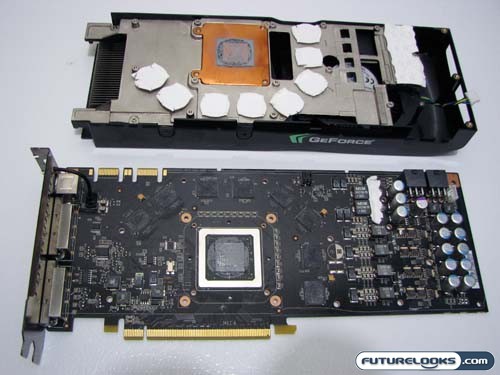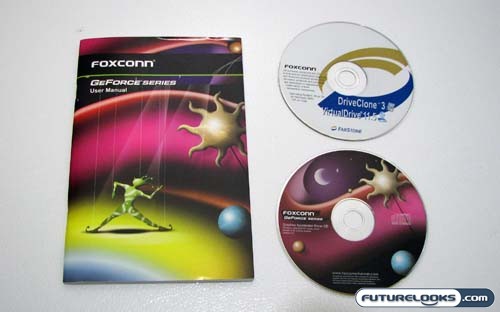The Naked Truth

Removal of the heatsink of the Foxconn card took a fair degree of twisting of a screwdriver. Once removed you get to see that not much has changed in overall layout from previous nVidia flagship cards. The performance has been increased, with GPU being run at a brisk 780MHz; an overclock of 105MHz above stock speeds. It’s somewhat humorous to note that to cool the GPU nVidia still likes to use an overly generous dollop of thermal grease, like it was sour cream on nachos. As for the memory, it’s running at 2360MHz effective, which is 160MHz more than stock speeds. All in all the package still looks similar.

That is until you get to the back of the card and start looking at the power management systems. It has definitely been beefed up from the last generation of cards. The whole enchilada includes such handy features as Japanese solid capacitors and voltage regulation circuitry that is fully cooled by the heatsink. This no doubt aides in overclocking performance, and should you be so lucky you might be able to push this card higher than the speeds used by Foxconn.
What Else Is Included?
Foxconn included what I would consider the minimum for accessories for a video card like this. They packed in two DVI to VGA adapters, two Molex to PCI Express power adapters, and the HD Component Video cable. Also included was a minimalist set of software.

Foxconn includes two CDs with their 9800 GTX package, which have a variety of utilities on them of varying use depending on what you need. The main CD includes a near-as-makes-no-difference nVidia driver (unless you don’t have internet), the Foxware overclocking utility, and a program called FoxLight which is used to control the LED on the front of the video card above the ports. The secondary CD contains a Drive copying utility and some CD Drive Emulation software that is along the lines of Daemon Tools.
Real-Time Price and Stock Check – Shop Like a PRO!
